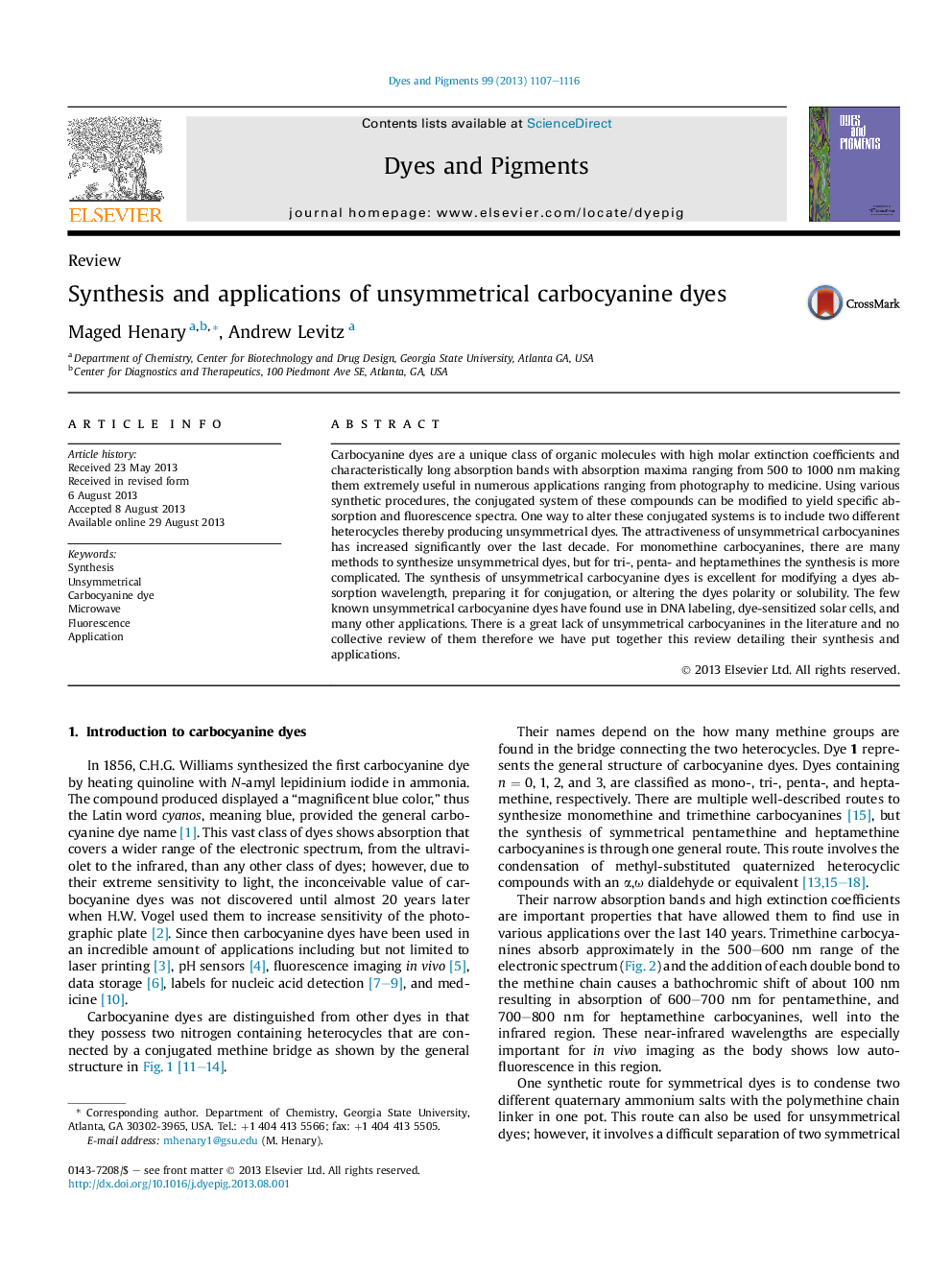| Article ID | Journal | Published Year | Pages | File Type |
|---|---|---|---|---|
| 176409 | Dyes and Pigments | 2013 | 10 Pages |
•Carbocyanine dyes are an immense class of compounds with extensive applications.•Synthetic methods of unsymmetrical carbocyanine dyes.•Microwave and solid-phase conditions can be used for unsymmetrical dye synthesis.•Absorption and fluorescence wavelengths can be modified using unsymmetrical dyes.•Unsymmetrical dyes can alter polarity and solubility causing less aggregation.
Carbocyanine dyes are a unique class of organic molecules with high molar extinction coefficients and characteristically long absorption bands with absorption maxima ranging from 500 to 1000 nm making them extremely useful in numerous applications ranging from photography to medicine. Using various synthetic procedures, the conjugated system of these compounds can be modified to yield specific absorption and fluorescence spectra. One way to alter these conjugated systems is to include two different heterocycles thereby producing unsymmetrical dyes. The attractiveness of unsymmetrical carbocyanines has increased significantly over the last decade. For monomethine carbocyanines, there are many methods to synthesize unsymmetrical dyes, but for tri-, penta- and heptamethines the synthesis is more complicated. The synthesis of unsymmetrical carbocyanine dyes is excellent for modifying a dyes absorption wavelength, preparing it for conjugation, or altering the dyes polarity or solubility. The few known unsymmetrical carbocyanine dyes have found use in DNA labeling, dye-sensitized solar cells, and many other applications. There is a great lack of unsymmetrical carbocyanines in the literature and no collective review of them therefore we have put together this review detailing their synthesis and applications.
